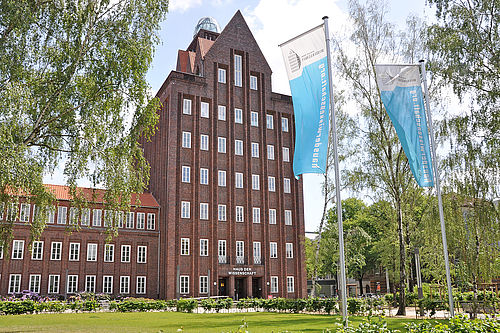We look forward to seeing you!
Please also visit our new research offer!
Where to put documents and files?
Since 1978, the TU Brauschweig Archive has been taking over, securing and cataloguing documents from all the university's institutions, since 1997 as a department of the university library. In accordance with the archive regulations of the Technische Universität Braunschweig, we make the records of the TU accessible and usable for academic research, the public and future generations. An advisory board accompanies our work.
Our holdings contain information on the history of the institutions since 1745 as well as on the people who shaped them, who taught, researched and studied here. We also hold archival material from the University of Education and its predecessors (1927-1978), as well as material from and about the societies and associations closely associated with the TU.

The archives date back to the founding of the Collegium Carolinum, the origin of today's TU, in 1745. There are currently almost 1,100 linear metres of archives in our stacks. The chronological focus here is clearly on the 20th century. A special part of the archive are the letters and company documents of the well-known Vieweg publishing house.
And the archive is constantly growing: after the retention periods have expired, we examine the documents that are no longer needed in the administration, evaluate and take over the material that is important for the future and ensure that it is usable and permanently secured. In addition, we collect various other materials to supplement the records: printed matter, leaflets, posters, flyers, private documents as well as scientific bequests and estates, photos and films, but also digital sources. This is the only way that research into the history of the university can build on a wide range of perspectives in the future.

In order to make the transfer of material from the university administration, departments, offices and institutes as smooth as possible, we advise colleagues on document management. This includes, for example, maintaining the catalogue for retention periods, as well as advice on structured file management and storage. The creation of records is a process that does not just begin with the submission of documents to the archive.
We promote research into the history of the university. We also compile and present aspects of the TU's rich past in our own publications. For example, are you already familiar with our exhibition in the House of Science?